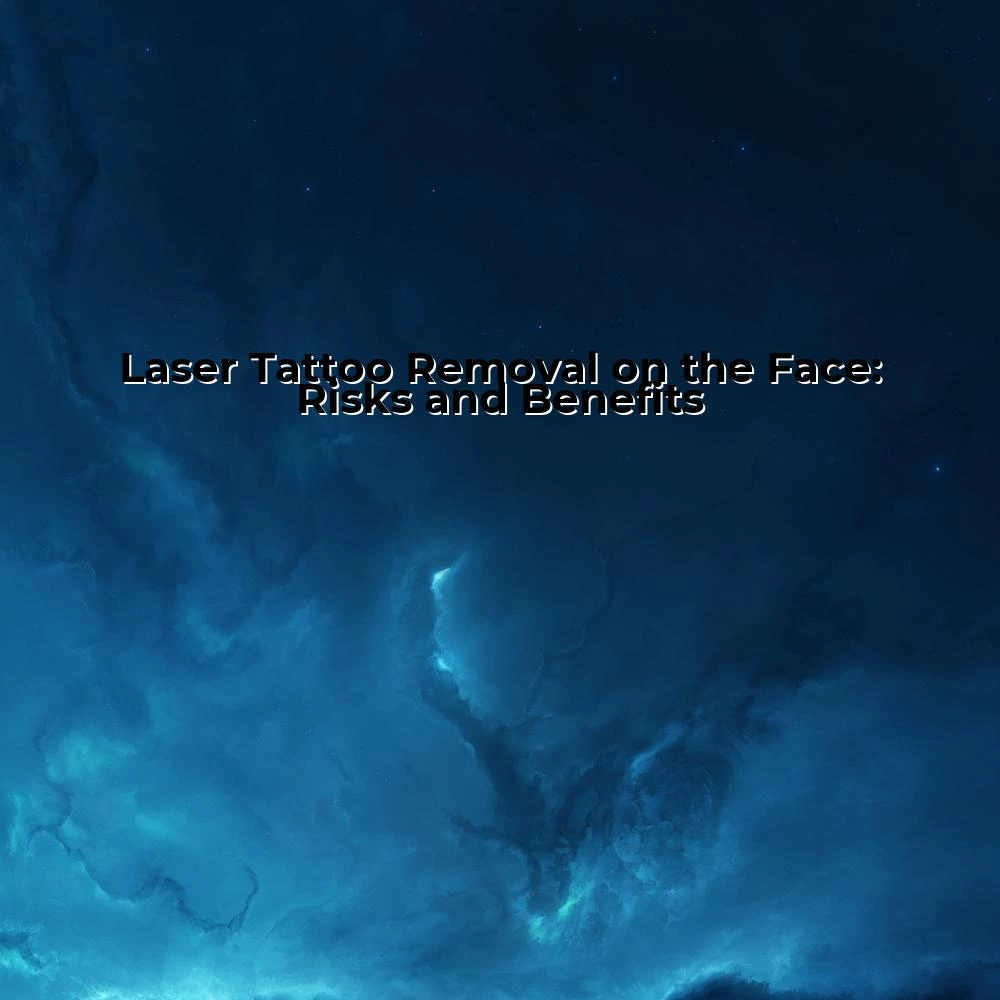Laser Tattoo Removal on the Face
| Visit:86

Laser Tattoo Removal on the Face
INTRODUCTION
Laser tattoo removal has gained considerable popularity over the years as a highly effective method for eliminating unwanted tattoos, particularly on the face. Given the prominent location of facial tattoos, laser tattoo removal on the face is an intricate process that necessitates extreme precision and a comprehensive understanding of facial anatomy. This article aims to explore the underlying benefits and potential risks of laser tattoo removal on the face.
BENEFITS
1. Effectiveness: Laser tattoo removal is a well-established and scientifically proven technique for tattoo removal worldwide. Specifically, the procedure radiates laser beams into the skin that shatter the tattoo pigments into tiny particles. These particles are then naturally absorbed and expelled by the body, thereby gradually fading the tattoo.
2. Minimally Invasive: Unlike other physical abrasion methods, laser tattoo removal is non-surgical and minimally invasive. The procedure does not involve any cuts or sutures, which significantly reduces the healing time and potential for scarring.
3. Precision: The laser technology used in tattoo removal allows for high precision, which is crucial in treating delicate and sensitive areas like the face. The lasers can target and break down the tattoo pigment without harming the surrounding skin tissues, ensuring efficient and safe treatment.
RISKS
Despite these benefits, laser tattoo removal on the face also has its share of risks.
1. Skin Discoloration: One of the most common side effects is the potential for skin discoloration. Although the procedure specifically targets the tattoo pigments, it may also alter the natural pigmentation of the skin temporarily or permanently.
2. Post-inflammatory Hyperpigmentation (PIH): Another risk associated with this procedure is PIH, a condition that causes the skin to darken temporarily in response to inflammation or injury.
3. Infections and Scarring: There is also a minor risk of infections and potential scarring. Albeit minimal invasive, the process triggers a healing response in the skin, and if left unattended, it might lead to complications.
4. Incomplete Removal: Not all tattoo pigments respond effectively to laser treatment. Certain colors, such as blue and green, are more resilient to laser treatment and may not be completely removed.
CONCLUSION
To strike a balance between the efficacy and safety of treatment, a comprehensive understanding of a patient's skin type, tattoo characteristics, and laser technology is crucial. Hence, deep expertise and clinical experience are key factors in ensuring successful facial laser tattoo removal. In sum, while the procedure comes with certain risks, if executed meticulously by an experienced professional, it can serve as an effective and reliable solution for facial tattoo removal.
It is always advisable for professionals to refer to comprehensive platforms like https://www.ciellulu.net/ to stay updated on best practices, technological advancements, and the latest research in laser tattoo removal.
As with any medical procedure, it is essential to explain the benefits and possible risks to patients thoroughly, allowing them to make an informed decision about the treatment. It paves the way for better patient satisfaction and successful outcomes in facial laser tattoo removal.
Source: Laser Tattoo Removal on the Face




 Ciellulu Laser - Facial Machine Supplier
Ciellulu Laser - Facial Machine Supplier

